-
Report Prologue
-
Market Introduction
-
Scope of Study 16
-
Research Objective 16
-
Assumptions & Limitations 16
- Limitations 16
-
Assumptions 16
-
Market Structure 17
-
Research Methodology
-
Primary Research Methodology 19
-
Secondary
-
Research Methodology 20
-
Market Share Analysis 21
-
Trade Analysis
-
Market Pricing Approach 21
-
Market Dynamics
-
Introduction
-
Drivers 23
- Increasing Prevalence of Cardiovascular Diseases
- Favourable Reimbursement Policies 24
- Increasing Geriatric
-
Population 25
-
Restraints 26
- High Cost of Smart Heart Rate Monitors
-
such as Smart Watches and Availability of Similar Health Tracking Apps in Smart
-
Phones 26
-
Market Factor Analysis
-
Porter’s Five Forces
- Bargaining Power of Suppliers 28
- Bargaining Power
- Threat of New Entrants 28
- Threat of Substitutes
- Intensity of Rivalry 28
-
Model 27
-
of Buyers 28
-
Value Chain Analysis 29
- App developers 30
- Network providers/
- Healthcare providers 30
- Patients 31
-
Device manufacturers 30
-
Mobile operators 30
-
Heart Rate Monitors Market, By Type
-
Introduction 32
-
Wearable HR Monitors 33
-
Non-wearable HR Monitors 34
-
Heart
-
Rate Monitors Market, by Application
-
Introduction 35
-
Sports 36
-
Medical 37
-
Others 37
-
Heart Rate Monitors Market, by
-
End User
-
Introduction 38
-
Hospitals & Clinics 39
-
Sport
-
Medicine Centers 40
-
Professionals 41
-
Individuals 42
-
Global Heart Rate Monitors Market, By Region
-
Introduction 43
-
Americas
-
Heart Rate Monitors Market, By Type
-
Heart Rate Monitors Market, by
-
Application
-
Heart Rate Monitors Market, by End User
-
Heart
-
U.S. 48
-
Rate Monitors Market, By Type
-
Heart Rate Monitors Market, by Application
-
Heart Rate Monitors Market, by End User
-
Heart Rate Monitors
-
Canada 49
-
Market, By Type
-
Heart Rate Monitors Market, by Application
-
Heart Rate
-
Monitors Market, by End User
-
Heart Rate Monitors
-
South America 51
-
Market, By Type
-
Heart Rate Monitors Market, by Application
-
Heart Rate
-
Monitors Market, by End User
-
Europe 53
-
Heart Rate Monitors Market,
-
By Type
-
Heart Rate Monitors Market, by Application
-
Heart Rate Monitors
-
Market, by End User
-
Germany 56
-
Heart Rate Monitors Market, By Type
-
Heart Rate Monitors Market, by Application
-
Heart Rate Monitors Market, by
-
End User
-
France 57
-
Heart Rate Monitors Market, By Type
-
Heart
-
Rate Monitors Market, by Application
-
Heart Rate Monitors Market, by End User
-
U.K 59
-
Heart Rate Monitors Market, By Type
-
Heart Rate Monitors
-
Market, by Application
-
Heart Rate Monitors Market, by End User
-
Italy
-
Heart Rate Monitors Market, By Type
-
Heart Rate Monitors Market, by
-
Application
-
Heart Rate Monitors Market, by End User
-
Spain 62
-
Heart Rate Monitors Market, By Type
-
Heart Rate Monitors Market, by Application
-
Heart Rate Monitors Market, by End User
-
Rest of Western Europe 63
-
Heart Rate Monitors Market, By Type
-
Heart Rate Monitors Market, by Application
-
Heart Rate Monitors Market, by End User
-
Heart
-
Eastern Europe 65
-
Rate Monitors Market, By Type
-
Heart Rate Monitors Market, by Application
-
Heart Rate Monitors Market, by End User
-
Asia Pacific 67
-
Heart Rate
-
Monitors Market, By Type
-
Heart Rate Monitors Market, by Application
-
Heart
-
Rate Monitors Market, by End User
-
Heart Rate Monitors Market,
-
By Type
-
Japan 70
-
Heart Rate Monitors Market, by Application
-
Heart Rate Monitors
-
Market, by End User
-
China 71
-
Heart Rate Monitors Market, By Type
-
Heart Rate Monitors Market, by Application
-
Heart Rate Monitors Market, by
-
End User
-
India 73
-
Heart Rate Monitors Market, By Type
-
Heart
-
Rate Monitors Market, by Application
-
Heart Rate Monitors Market, by End User
-
Australia 74
-
Heart Rate Monitors Market, By Type
-
Heart Rate Monitors
-
Market, by Application
-
Heart Rate Monitors Market, by End User
-
of Korea 76
-
Republic
-
Heart Rate Monitors Market, By Type
-
Heart Rate Monitors Market,
-
by Application
-
Heart Rate Monitors Market, by End User
-
Pacific 77
-
Rest of Asia
-
Heart Rate Monitors Market, By Type
-
Heart Rate Monitors Market,
-
by Application
-
Heart Rate Monitors Market, by End User
-
Middle East
-
& Africa 79
-
Heart Rate Monitors Market, By Type
-
Heart Rate Monitors
-
Market, by Application
-
Heart Rate Monitors Market, by End User
-
East 82
-
Middle
-
Heart Rate Monitors Market, By Type
-
Heart Rate Monitors Market,
-
by Application
-
Heart Rate Monitors Market, by End User
-
Africa 83
-
Heart Rate Monitors Market, By Type
-
Heart Rate Monitors Market, by Application
-
Heart Rate Monitors Market, by End User
-
Competitive Landscape
-
Introduction 85
-
Company Share Analysis 86
-
Key Developments 87
-
Company Profiles
-
Fitbit, Inc. 88
- Company Overview
- Financials 88
- Products 88
- Strategy 88
- Key Developments 88
-
Apple 89
- Company Overview 89
- Financials 89
- Products 89
- Strategy 89
-
Key Developments 89
-
Samsung Electronics Co., Ltd. 90
- Company
- Financials 90
- Products 90
- Strategy
- Key Developments 90
-
Overview 90
-
Nike 91
- Company Overview
- Financials 91
- Products 91
- Strategy 91
- Key Developments 91
-
Garmin Ltd. 92
- Company Overview
- Financials 92
- Products 92
- Strategy 92
- Key Developments 92
-
Motorola Solutions, Inc. 93
- Company
- Financials 93
- Products 93
- Strategy
- Key Developments 93
-
Overview 93
-
Polar Electro 94
- Company
- Financials 94
- Products 94
- Strategy
- Key Developments 94
-
Overview 94
-
Sony 95
- Company Overview
- Financials 95
- Products 95
- Strategy 95
- Key Developments 95
-
Visiomed Group 96
- Company Overview
- Financials 96
- Products 96
- Strategy 96
- Key Developments 96
-
Omron Healthcare, Inc. 97
- Company
- Financials 97
- Products 97
- Strategy
- Key Developments 97
-
Overview 97
-
Beurer GmbH 98
- Company
- Financials 98
- Products 98
- Strategy
- Key Developments 98
-
Overview 98
-
TomTom International BV 99
- Financials 99
- Products 99
- Key Developments 99
-
Company Overview 99
-
Strategy 99
-
nu-beca & maxcellent
- Company Overview 100
- Financials 100
- Strategy 100
- Key Developments 100
-
co. 100
-
Products 100
-
-
LG Electronics 101
- Company Overview 101
- Financials
- Products 101
- Strategy 101
- Key Developments
-
Mio Global 102
- Company Overview 102
- Financials
- Products 102
- Strategy 102
- Key Developments
-
Conclusion
-
Key Findings 103
- CEO’s
- Unmet Needs 103
- Key Companies to Watch 103
- Prediction of Medical Device Industry 103
-
Viewpoint 103
-
Appendix
-
Discussion Blue Print 104
-
References 106
-
List of Tables
-
PRIMARY INTERVIEWS 19
-
GLOBAL HEART RATE MONITORS MARKET,
-
BY TYPE, 2020-2027 (USD MILLION) 33
-
GLOBAL WEARABLE HR MONITORS MARKET,
-
BY REGION 2020-2027 (USD MILLION) 33
-
GLOBAL NON-WEARABLE HR MONITORS
-
MARKET, BY REGION, 2020-2027 (USD MILLION) 34
-
GLOBAL HEART RATE MONITORS
-
MARKET, BY APPLICATION, 2020-2027 (USD MILLION) 35
-
GLOBAL SPORTS MARKET,
-
BY REGION, 2020-2027 (USD MILLION) 36
-
GLOBAL MEDICAL MARKET, BY REGION,
-
GLOBAL HEART RATE MONITORS MARKET, END USER,
-
BY REGION, 2020-2027 (USD MILLION) 39
-
GLOBAL HOSPITALS & CLINICS
-
MARKET, BY REGION, 2020-2027 (USD MILLION) 39
-
GLOBAL SPORT MEDICINE
-
CENTRES MARKET, BY REGION, 2020-2027 (USD MILLION) 40
-
GLOBAL PROFESSIONALS
-
MARKET, BY REGION, 2020-2027 (USD MILLION) 41
-
GLOBAL INDIVIDUALS MARKET,
-
BY REGION, 2020-2027 (USD MILLION) 42
-
GLOBAL HEART RATE MONITORS MARKET,
-
BY REGION, 2020-2027 (USD MILLION) 44
-
AMERICAS HEART RATE MONITORS
-
MARKET, BY REGION, 2020-2027 (USD MILLION) 46
-
AMERICAS HEART RATE
-
MONITORS MARKET, TYPE, 2020-2027 (USD MILLION) 46
-
AMERICAS HEART RATE
-
MONITORS MARKET, APPLICATION, 2020-2027 (USD MILLION) 47
-
AMERICAS
-
HEART RATE MONITORS MARKET, END USER, 2020-2027 (USD MILLION) 47
-
U.S.
-
HEART RATE MONITORS MARKET, TYPE, 2020-2027 (USD MILLION) 48
-
U.S.
-
HEART RATE MONITORS MARKET, APPLICATION, 2020-2027 (USD MILLION) 48
-
TABLE 20
-
U.S. HEART RATE MONITORS MARKET, END USER, 2020-2027 (USD MILLION) 49
-
TABLE
-
CANADA HEART RATE MONITORS MARKET, TYPE, 2020-2027 (USD MILLION) 49
-
TABLE
-
CANADA HEART RATE MONITORS MARKET, APPLICATION, 2020-2027 (USD MILLION) 50
-
CANADA HEART RATE MONITORS MARKET, END USER, 2020-2027 (USD MILLION)
-
SOUTH AMERICA HEART RATE MONITORS MARKET, TYPE, 2020-2027 (USD
-
MILLION) 51
-
SOUTH AMERICA HEART RATE MONITORS MARKET, APPLICATION,
-
SOUTH AMERICA HEART RATE MONITORS MARKET,
-
END USER, 2020-2027 (USD MILLION) 52
-
EUROPE HEART RATE MONITORS MARKET,
-
BY REGION, 2020-2027 (USD MILLION) 54
-
EUROPE HEART RATE MONITORS MARKET,
-
TYPE, 2020-2027 (USD MILLION) 54
-
EUROPE HEART RATE MONITORS MARKET,
-
APPLICATION, 2020-2027 (USD MILLION) 55
-
EUROPE HEART RATE MONITORS
-
MARKET, END USER, 2020-2027 (USD MILLION) 55
-
GERMANY HEART RATE MONITORS
-
MARKET, BY TYPE, 2020-2027 (USD MILLION) 56
-
GERMANY HEART RATE MONITORS
-
MARKET, BY APPLICATION, 2020-2027 (USD MILLION) 56
-
GERMANY HEART RATE
-
MONITORS MARKET, BY END USER, 2020-2027 (USD MILLION) 57
-
FRANCE HEART
-
RATE MONITORS MARKET, BY TYPE, 2020-2027 (USD MILLION) 57
-
FRANCE HEART
-
RATE MONITORS MARKET, BY APPLICATION, 2020-2027 (USD MILLION) 58
-
FRANCE
-
HEART RATE MONITORS MARKET, BY END USER, 2020-2027 (USD MILLION) 58
-
TABLE 37
-
U.K HEART RATE MONITORS MARKET, BY TYPE, 2020-2027 (USD MILLION) 59
-
TABLE 38
-
U.K HEART RATE MONITORS MARKET, BY APPLICATION, 2020-2027 (USD MILLION) 59
-
TABLE
-
U.K HEART RATE MONITORS MARKET, BY END USER, 2020-2027 (USD MILLION) 60
-
TABLE
-
ITALY HEART RATE MONITORS MARKET, BY TYPE, 2020-2027 (USD MILLION) 60
-
TABLE
-
ITALY HEART RATE MONITORS MARKET, BY APPLICATION, 2020-2027 (USD MILLION) 61
-
ITALY HEART RATE MONITORS MARKET, BY END USER, 2020-2027 (USD MILLION)
-
SPAIN HEART RATE MONITORS MARKET, BY TYPE, 2020-2027 (USD MILLION)
-
SPAIN HEART RATE MONITORS MARKET, BY APPLICATION, 2020-2027 (USD
-
MILLION) 62
-
SPAIN HEART RATE MONITORS MARKET, BY END USER, 2020-2027
-
(USD MILLION) 63
-
REST OF WESTERN EUROPE HEART RATE MONITORS MARKET,
-
BY TYPE, 2020-2027 (USD MILLION) 63
-
REST OF WESTERN EUROPE HEART RATE
-
MONITORS MARKET, BY APPLICATION,
-
REST
-
OF WESTERN EUROPE HEART RATE MONITORS MARKET, BY END USER, 2020-2027 (USD MILLION)
-
EASTERN EUROPE HEART RATE MONITORS MARKET, BY TYPE, 2020-2027 (USD
-
MILLION) 65
-
EASTERN EUROPE HEART RATE MONITORS MARKET, BY APPLICATION,
-
EASTERN EUROPE HEART RATE MONITORS MARKET,
-
BY END USER, 2020-2027 (USD MILLION) 66
-
ASIA PACIFIC HEART RATE MONITORS
-
MARKET, BY REGION, 2020-2027 (USD MILLION) 68
-
ASIA PACIFIC HEART RATE
-
MONITORS MARKET, BY TYPE, 2020-2027 (USD MILLION) 68
-
ASIA PACIFIC
-
HEART RATE MONITORS MARKET, BY APPLICATION, 2020-2027 (USD MILLION) 69
-
TABLE
-
ASIA PACIFIC HEART RATE MONITORS MARKET, BY END USER, 2020-2027 (USD MILLION)
-
JAPAN HEART RATE MONITORS MARKET, BY TYPE, 2020-2027 (USD MILLION)
-
JAPAN HEART RATE MONITORS MARKET, BY APPLICATION, 2020-2027 (USD
-
MILLION) 70
-
JAPAN HEART RATE MONITORS MARKET, BY END USER, 2020-2027
-
(USD MILLION) 71
-
CHINA HEART RATE MONITORS MARKET, BY TYPE, 2020-2027
-
(USD MILLION) 71
-
CHINA HEART RATE MONITORS MARKET, BY APPLICATION,
-
CHINA HEART RATE MONITORS MARKET, BY END
-
USER, 2020-2027 (USD MILLION) 72
-
INDIA HEART RATE MONITORS MARKET,
-
BY TYPE, 2020-2027 (USD MILLION) 73
-
INDIA HEART RATE MONITORS MARKET,
-
BY APPLICATION, 2020-2027 (USD MILLION) 73
-
INDIA HEART RATE MONITORS
-
MARKET, BY END USER, 2020-2027 (USD MILLION) 74
-
AUSTRALIA HEART RATE
-
MONITORS MARKET, BY TYPE, 2020-2027 (USD MILLION) 74
-
AUSTRALIA HEART
-
RATE MONITORS MARKET, BY APPLICATION, 2020-2027 (USD MILLION) 75
-
AUSTRALIA
-
HEART RATE MONITORS MARKET, BY END USER, 2020-2027 (USD MILLION) 75
-
TABLE 68
-
REPUBLIC OF KOREA HEART RATE MONITORS MARKET, BY TYPE, 2020-2027 (USD MILLION) 76
-
REPUBLIC OF KOREA HEART RATE MONITORS MARKET, BY APPLICATION, 2020-2027
-
(USD MILLION) 76
-
REPUBLIC OF KOREA HEART RATE MONITORS MARKET, BY
-
END USER, 2020-2027 (USD MILLION) 77
-
REST OF ASIA PACIFIC HEART RATE
-
MONITORS MARKET, BY TYPE, 2020-2027 (USD MILLION) 77
-
REST OF ASIA
-
PACIFIC HEART RATE MONITORS MARKET, BY APPLICATION, 2020-2027 (USD MILLION) 78
-
REST OF ASIA PACIFIC HEART RATE MONITORS MARKET, BY END USER, 2020-2027
-
(USD MILLION) 78
-
MIDDLE EAST & AFRICA HEART RATE MONITORS MARKET,
-
BY REGION, 2020-2027 (USD MILLION) 80
-
MIDDLE EAST & AFRICA HEART
-
RATE MONITORS MARKET, BY TYPE, 2020-2027 (USD MILLION) 80
-
MIDDLE EAST
-
& AFRICA HEART RATE MONITORS MARKET, BY APPLICATION, 2020-2027 (USD MILLION)
-
MIDDLE EAST & AFRICA HEART RATE MONITORS MARKET, BY END USER,
-
MIDDLE EAST HEART RATE MONITORS MARKET,
-
BY TYPE, 2020-2027 (USD MILLION) 82
-
MIDDLE EAST HEART RATE MONITORS
-
MARKET, BY APPLICATION, 2020-2027 (USD MILLION) 82
-
MIDDLE EAST HEART
-
RATE MONITORS MARKET, BY END USER, 2020-2027 (USD MILLION) 83
-
AFRICA
-
HEART RATE MONITORS MARKET, BY TYPE, 2020-2027 (USD MILLION) 83
-
AFRICA
-
HEART RATE MONITORS MARKET, BY APPLICATION, 2020-2027 (USD MILLION) 84
-
TABLE
-
AFRICA HEART RATE MONITORS MARKET, BY END USER, 2020-2027 (USD MILLION) 84
-
List of Figures
-
GLOBAL HEART RATE MONITORS
-
MARKET, BY TYPE, 2020(%) 13
-
GLOBAL HEART RATE MONITORS MARKET, BY
-
APPLICATION, 2020(%) 13
-
GLOBAL HEART RATE MONITORS MARKET, BY END
-
USER, 2020(%) 14
-
GLOBAL HEART RATE MONITORS MARKET, BY REGION, 2020(%)
-
MARKET STRUCTURE OF GLOBAL HEART RATE MONITORS MARKET 17
-
FIGURE
-
RESEARCH METHODOLOGY 18
-
MAKRET DYNAMICS 22
-
PORTERS
-
FIVE FORCES MODEL: GLOBAL HEART RATE MONITORS MARKET 27
-
VALUE CHAIN:
-
GLOBAL HEART RATE MONITORS MARKET 29
-
GLOBAL HEART RATE MONITORS MARKET,
-
BY TYPE, 2020& 2027 (USD MILLION) 32
-
GLOBAL HEART RATE MONITORS
-
MARKET, BY APPLICATION 2020& 2027 (USD MILLION) 35
-
GLOBAL HEART
-
RATE MONITORS MARKET BY END USER, 2020& 2027 (USD MILLION) 38
-
FIGURE 13
-
GLOBAL HEART RATE MONITORS MARKET, BY REGION, 2020& 2027 (USD MILLION) 43
-
AMERICAS HEART RATE MONITORS MARKET, BY REGION, 2020(%) 45
-
FIGURE
-
EUROPE HEART RATE MONITORS MARKET, BY REGION, 2020(%) 53
-
ASIA
-
PACIFIC HEART RATE MONITORS MARKET, BY COUNTRY/REGION, 2020(%) 67
-
FIGURE 17
-
MIDDLE EAST & AFRICA HEART RATE MONITORS MARKET, BY REGION, 2020(%) 79
-
FIGURE
-
GLOBAL HEART RATE MONITORS MARKET, COMPANY SHARE ANALYSIS, 2020(%) 86
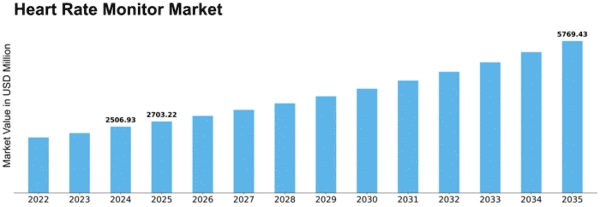

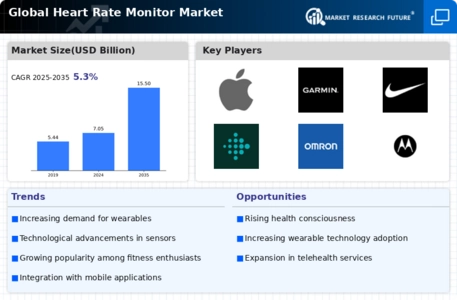
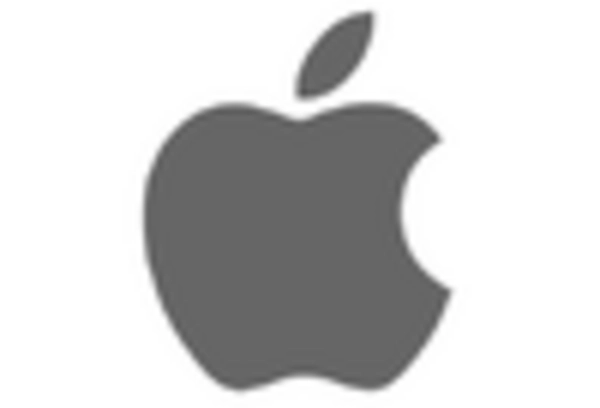
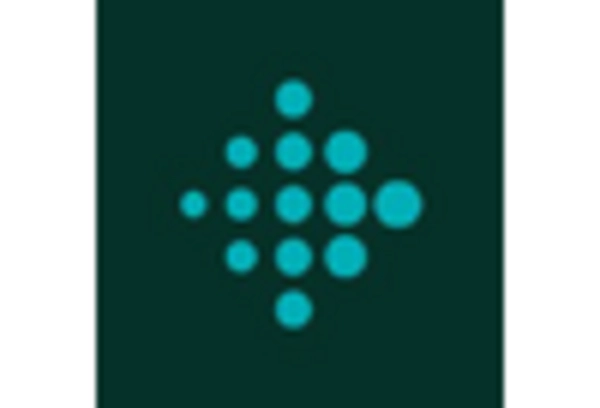
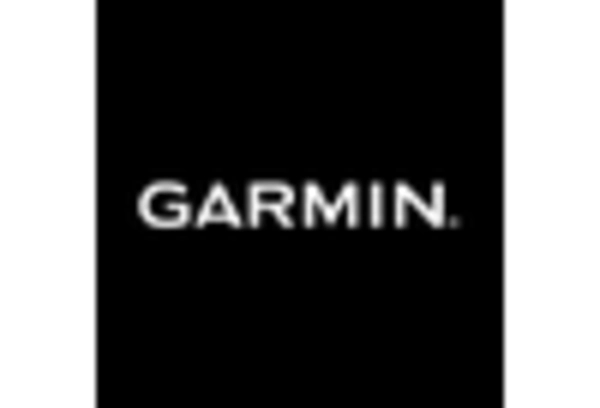
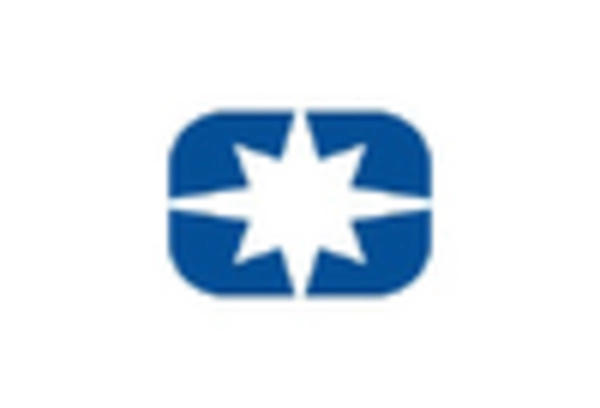
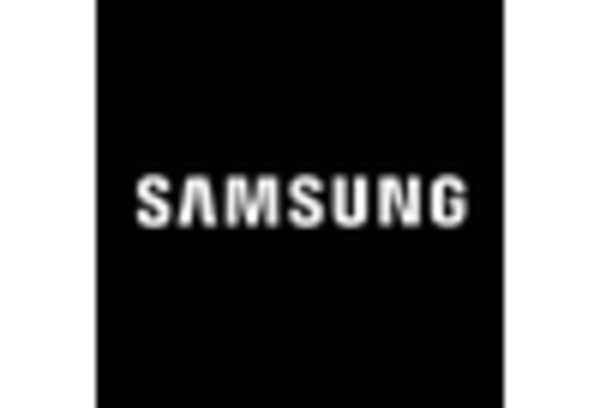
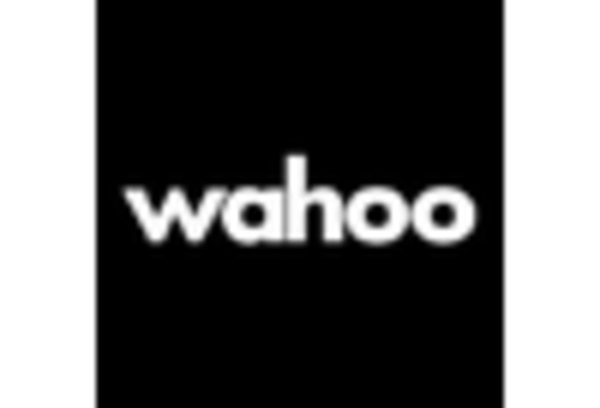









Leave a Comment